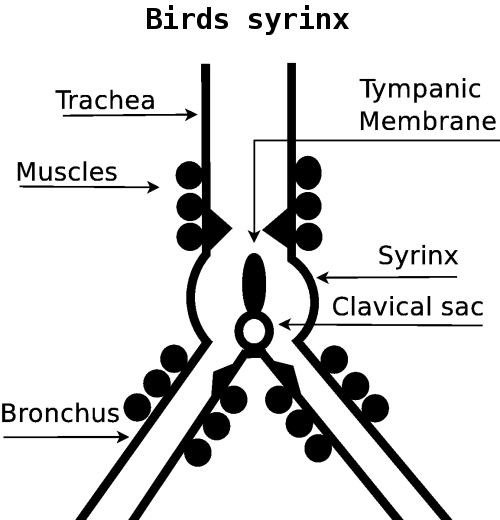Ishari (Vectorial) Taswit (Auditory
Exegesis) of Siin (s Sound)

Discussion Join
See Also:
http://untiredwithloving.org/28_glances.html
http://www.untiredwithloving.org/harf.html
http://www.untiredwithloving.org/anna_inna.html
http://www.untiredwithloving.org/jacob_mirror.html#ka_presence
http://www.untiredwithloving.org/hu_samani.html
Reciter: Sheikh Sa'ad Al-Ghamdi
Download (English Voice-over) :
160kbps.mp3
320kbps.mp3
Download (Clean) : 160kbps.mp3
320kbps.mp3
Production
Software: http://www.alessandro-petrolati.it/2010_density/?page_id=2
Files: .ZIP
(215 MB includes Garage Band tracks and all sound files)
Overture
Ishari
(Vectorial)
Exegesis is a spiritual faculty for elucidating
spiritual experiences felt in one's heart while exposed to Divine
Verbiage. There is no learning/ignorance or instruction for Ishara
(Vector Pointing); just like a pre-linguistic toddler placed on a beach
cannot explain or talk about the waves and ocean but indeed does point
at them with his finger and arm! And no one taught him to point.
As the toddler uses his finger to point at the waves, Ishari
Exegesis
uses any material or concept within the reach to point at the Divine
Words. The viewers of this Ishara are not finding any explanations
provided, instead they SEE arrows/vectors pointing from this world to
the concepts of the Malakut (Spiritual
Realm) and staring along these
arrows does help the viewers to see something of the other
universe.
Taswit or Auditory Exegesis is a form of acoustic cognizance ('Urf)
allowing the listener to grasp something of the Divine Verbiage by
listening to acoustical sounds and compositions, as opposed to verbal
explanations. Indeed sounds do carry spiritual CODES within them for
human cognitive consumption free of the usual instructional
explanations.
Ishari Taswit are acoustic Arrows pointing from this world to the
Malakut (Spiritual
Realm), by listening along these arrows terrific
spiritual concepts are sang and rhymed within.
Ishara 1: Whale
Listen: http://www.mediafire.com/file/1zz1erlnu0d1wps/whale_balin_1.wav
Whales do make underwater songs which propagate terrific distances to
identify themselves or to mate or voyage and etc. However they do not
open their mouths nor they let out any bubbles of air to generate the
sound. Indeed all their songs are sang with mouth closed tight and no
bubbles.
This Ishara (Vector) points to acoustic signals generated without the
use of any cut or perforation or release of air, serving as a Ta'yyun
(Contrast)
to the following forms.
Ishara 2: Songbird
Listen: http://www.mediafire.com/file/61asdk6y62h7b74/robin_vesper.wav
Expired air passing through the shape changing syrinx
hits the constricting expanding organs within syrinx and such
occlusions and obstructions to the passage of the air are what make
their songs.
They have to have a cut to their body i.e. the beak and this opening
allows for the air to escape and thus the sounds of their songs become
airborne and transmitted to other further locations.
Ishara 3: Whistling Wind
See: http://www.mediafire.com/file/7bly9gf47b6jf4a/Sea%20Pink.mp4
"Wind sounds are implicit productions; it is other things' obstructing
the wind which causes a sound" . (Andy Farnell, Designing Sound)
Therefore what sounds like whistling-wind to our ears is actually
silent wind hitting the rocks, bushes, branches and so on.
Ishara1 + Ishara 2 + Ishara 3, collectively, points as a bundled vector
to some wind-like
entity that is emanated from the Malakut (Spiritual
Realm) into our world and it makes a 'hiss' as in 's' sound, just
like syrinx
that pushes the air from a larger void through a narrower gap. Or like
a ventilation shaft that passes air from a larger volume through a
smaller opening of a vent.
Ishara 2 forces the Surat (Constraint)
that
there is an opening from
another universe into this universe and some how this opening is not
wide-enough for all the knowledges and cognizances to pass through at
once and hence the hiss: from the unlimited to the limited that
corridor [1].
This hissing phoneme in the language of the Dhikr
is called Siin (letter
sounding s in Arabic).
In particular the Prophet peace be upon him ordered the proper writing
of the Siin within the Basmala
to indicate its importance and need for
proper usage and handling of the Divine Letter:
كنز
العمال
الإصدار
2.01 - للمتقي الهندي
المجلد
العاشر
>>
أدب الكتابة
29566-
عن
معاوية
قال: قال رسول الله صلى الله عليه وسلم: يا معاوية ألق الدواة
وحرف (وحرف: تحريف القلم: قطه محرفا. المختار 99. ب) القلم وانصب (وانصب:
نصبت الخشبة نصبا من باب ضرب أقمتها. المصباح المنير 2/833 ب) الباء وفرق السين ولا تغور الميم
وحسن الله ومد الرحمن، وجود الرحيم، وضع قلمك على أذنك اليسرى فإنه أذكر
لك.
الديلمي.
Moreover Ya-Siin is used like the expiration flow of a perpetual call
from Malakut (Spiritual
Realm) to here, to invoke the Prophet:
Imam Ja'far Sadiq said: Yaa-Siin means Ya (O)
Sayyid
(Chieftain)
addressing the Prophet Muhammad peace be upon them both.
تفسير
حقائق
التفسير/
السلمي (ت 412 هـ)
{
يسۤ وَٱلْقُرْآنِ ٱلْحَكِيمِ }
قال جعفر الصادق - رحمة الله عليه -: فى
قوله { يسۤ } يا سيد مخاطبًا
لنبيه صلى الله عليه وسلم بذلك قال النبى صلى
الله عليه وسلم: " أنا سيدكم " لم يمدح نفسه ولكن أخبر عن معنى مخاطبة
الحق إياه بقوله { يسۤ } فهذا شبيه بقول النبى صلى الله عليه وسلم أنه قرأ
على المنبر:
{ وَنَادَوْاْ يٰمَالِكُ }
[الزخرف: 77].
قوله لأبى هريرة رضى الله عنه - " يا
أبا هريرة " وغير ذلك فلما أخبر الله تعالى عنه بالسيادة مبهمًا وأمره
بتصريحه صرّح بذلك فقال: " إن الله تعالى نادانى سيدًا فأنا سيد ولد آدم
ولا فخر ".
أى ولا فخر بالسيادة لأن افتخارى
بالعبودية أجَلّ من إخبارى عن نفسى بالسِّيادة.
Siin is found in Mursalin (Messengers) and Mustaqim (Unbending). The
Divine Hiss shapes the latter (Straight Path) and dispatches the
messengers repeatedly.
[1]: Comment made by Sayyida Sheila Salim.
© 2011-2002, Dara O
Shayda
